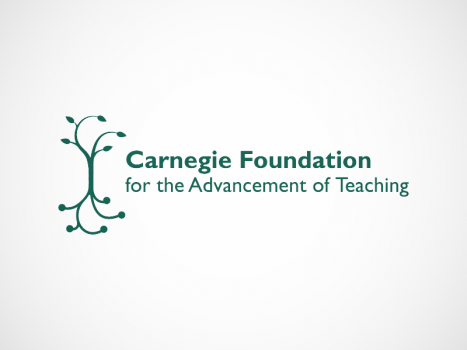In its second year, Carnegie’s Community College Pathways (CCP) program sustained its high level of student success while also experiencing a growth in the number of students enrolled and the number of campuses teaching Pathways courses.
The Community College Pathways: 2012-2013 Descriptive Report provides detailed student outcomes as well as insights into the challenges and improvements in the second year of Pathways implementation.
The Pathways were developed to address the alarming failure rates of students in developmental math in community colleges. Over 60 percent of the nation’s 14 million community college students are required to take at least one developmental mathematics class before they are eligible to enroll in college-credit courses (Achieving the Dream, 2006; Bailey, Jeong, and Cho 2010). However, 80 percent of the students who place into developmental math do not successfully complete any college-level mathematics courses within three years (Bailey, Jeong, and Cho, 2010). Instead, many students spend long periods of time repeating courses and leave college without a credential. This means that millions of students each year fail to acquire essential mathematics skills and are unable to progress toward their career and life goals.
Focusing on continuous improvement in classroom practice was key for the repeated positives outcomes for Pathways students in Year 2.
Working through a Networked Improvement Community (NIC), Carnegie put into the field two new mathematics pathways, Statway and Quantway. Both aim to simplify the path through the development mathematics sequence for students. Rather than a seeming random walk through a maze of possible course options (Zeidenberg and Scott, 2011), Statway and Quantway reduce the number of courses required while improving the content and pedagogy for developmental mathematics.
Carnegie believes that working in NICs and focusing on continuous improvement in classroom practice were key reasons for the repeated positives outcomes for students in Year 2.
The NIC realized the following results in its second year of operation:
STATWAY
- 52 percent of the 853 Statway community college students successfully completed the year-long pathway (received a grade of C or better in the final term). This is consistent with the results of 49 percent in Year 1 (2011-2012).
- Statway expanded to two additional colleges within the California State University (CSU) system adding a total of 204 students.
- 75 percent of CSU Statway students successfully completed the pathway, comparable with 74 percent in Year 1.
QUANTWAY
- The number of students enrolled in Quantway 1 tripled from Year 1 for a total of 1,402 enrolled.
- Quantway 2, the second semester of the pathway, was launched for the first time at three community colleges with 49 students.
- 52 percent of students successfully completed Quantway 1, demonstrating continued positive outcomes with 56 percent in Year 1.
- In its first semester, 68 percent of students successfully completed Quantway 2.
With considerably more students enrolled, the Year 2 data indicate that the Pathways offer the opportunity for students in a variety of contexts to gain key mathematical skills and reach their academic goals.
For more information on the Year 2 results, download Community College Pathways: 2012-2013 Descriptive Report.
December 4, 2013
Carnegie’s Pathways have had notable success in their first implementation. In addition to their high success rates, Rob Johnstone finds that Statway and Quantway very well may make money for an institution.
January 30, 2014
At a convening of experts in continuous improvement methodology hosted by Carnegie’s Advancing Teaching-Improving Learning identified four essential organizational conditions for continuous improvement to take root and thrive.







